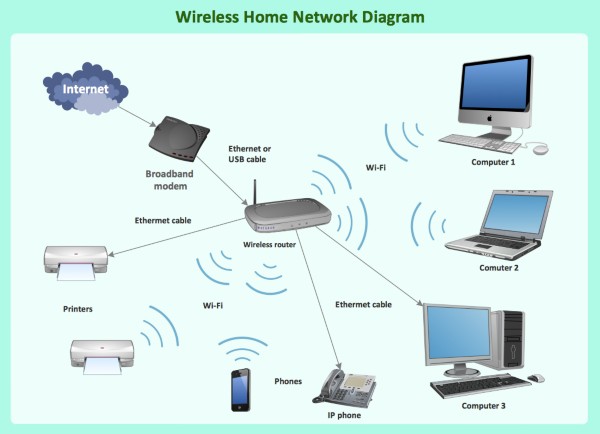
Date First Published: 6th February 2022
Topic: Computer Networking
Subtopic: Network Hardware
Article Type: Computer Terms & Definitions
Difficulty: MediumDifficulty Level: 5/10
Learn more about what a wireless access point is in this article.
Not to be confused with a Wireless Application Protocol.
A wireless access point, also known as a WAP, or simply an access point, is a device that allows devices with wireless capabilities and wired networks to connect to a network using a wireless standard. For example, access points are built into the hardware of routers that are used at home. Portable devices, such as smartphones, tablets, and laptops go through a hardware or built-in access point when performing online tasks in order to establish an internet connection without any cables.
Wireless access points provide an internet connection within a certain area. For example, a wireless access point could be used in the offices of a business to allow employees to stay connected to the network whilst being able to work anywhere and they could be used in a public place, such as an airport to provide wireless internet connection whilst people are waiting for their departure gate. A diagram of a wireless access point can be seen below.

Several wireless data standards have been introduced for wireless access point and wireless router technology. The main reason why newer standards have been introduced is that there has been a need for faster wireless network connections. Since a lot of devices were designed to be used with previous standards, some wireless routers allow backwards compatibility with older Wi-Fi technologies. Some examples of wireless data standards include: 802.11a, 802.11b, 802.11g, 802.11n, 802.11ac, and 802.11ax, also known as Wi-Fi 6.
If so, it is important that you tell me as soon as possible on this page.
Network Services Network Setups Network Standards Network Hardware Network Identifiers Network Software Internet Protocols Internet Organisations Data Transmission Technologies Web Development Web Design Web Advertising Web Applications Web Organisations Web Technologies Web Services SEO Threats To Systems, Data & Information Security Mechanisms & Technologies Computer Hardware Computer Software Ethics & Sustainability Legislation & User Data Protection